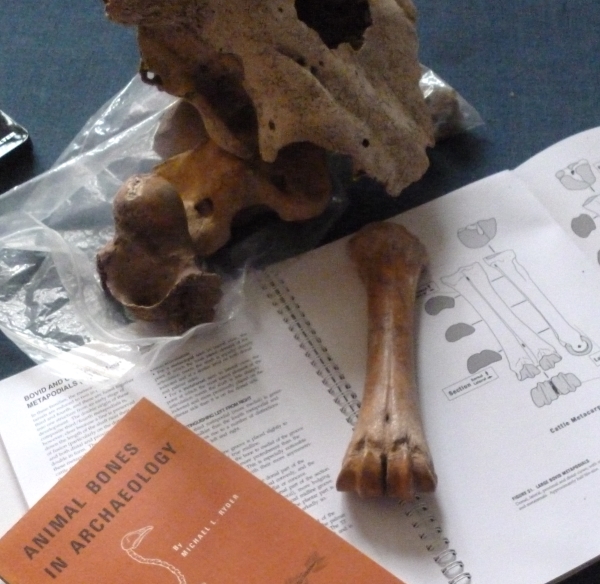
Animal bones are one of the most common finds in archaeological excavations, often forming large elements of the assemblage of finds.
Man has brought many animals into the routine of life, to use for food and to provide muscle power and as a source of other useful raw materials and resources. Many animals share the human world as companions, being fed and given a space to live because of some return they give for their keep. Some animals live as parasites, living off waste or on the by products of agriculture and industry. All can be represented in the collections of animals bone collected from archaeological sites. The size of each bone reflects the range of animals that share our world, from rodents and amphibians to cattle and in the earliest of sites some of the largest animals that have lived, like hippos and mammoths.
Understanding the patterns of distribution and the species that are represented are part of the process of reconstructing both the environment of the past and the patterns of consumption and exploitation of animals by humans. Part of the process of archaeological investigation is the identification the species of bones and bone fragments, quantifying the range of species represented and comparing them with the use of animals in cultures from the historic past and present. The evidence of the animal bones allows us to piece together the relationships between animals and humans, when we have no other written evidence to reconstruct them with.